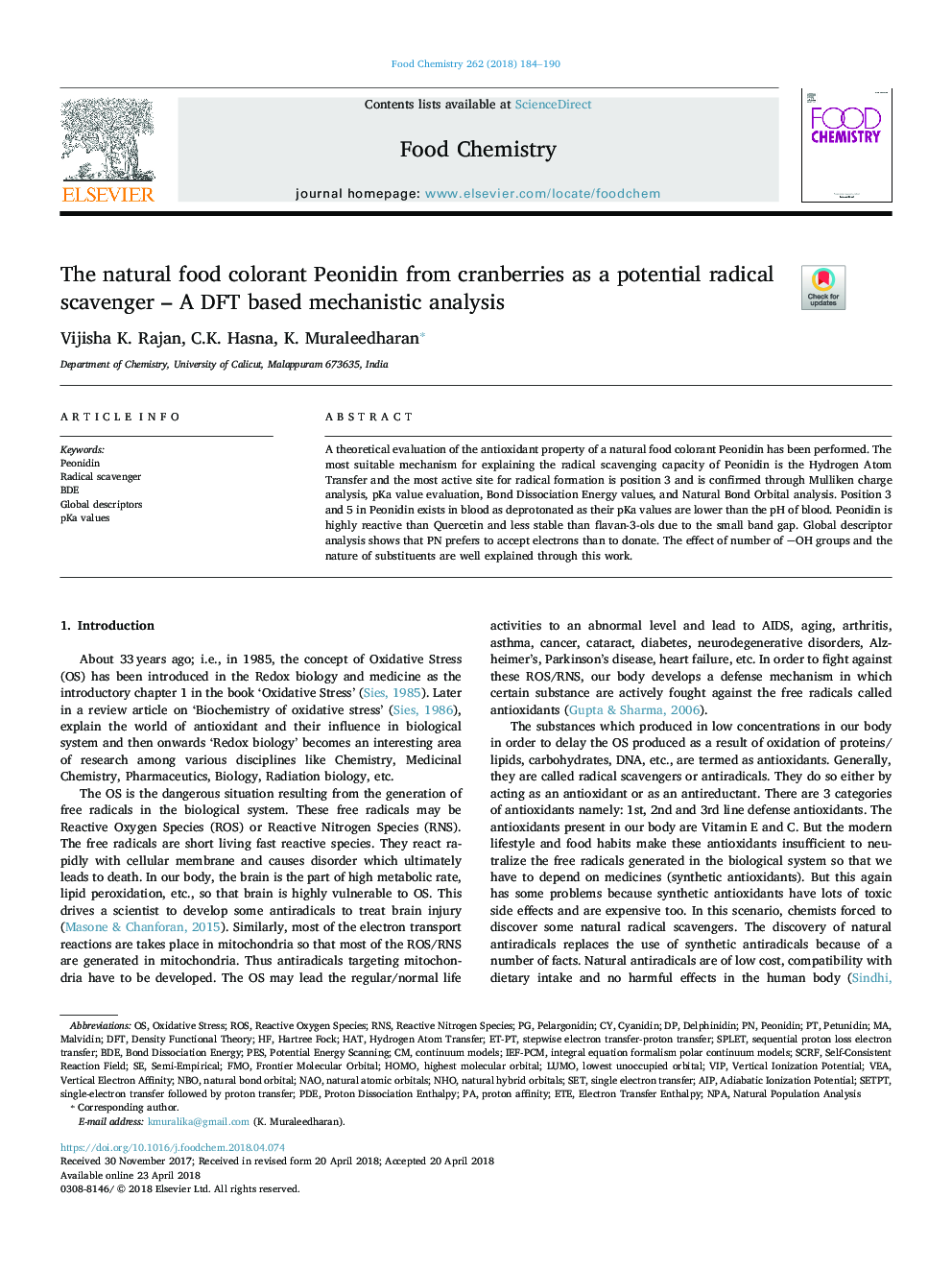| Article ID | Journal | Published Year | Pages | File Type |
|---|---|---|---|---|
| 7584846 | Food Chemistry | 2018 | 7 Pages |
Abstract
A theoretical evaluation of the antioxidant property of a natural food colorant Peonidin has been performed. The most suitable mechanism for explaining the radical scavenging capacity of Peonidin is the Hydrogen Atom Transfer and the most active site for radical formation is position 3 and is confirmed through Mulliken charge analysis, pKa value evaluation, Bond Dissociation Energy values, and Natural Bond Orbital analysis. Position 3 and 5 in Peonidin exists in blood as deprotonated as their pKa values are lower than the pH of blood. Peonidin is highly reactive than Quercetin and less stable than flavan-3-ols due to the small band gap. Global descriptor analysis shows that PN prefers to accept electrons than to donate. The effect of number of OH groups and the nature of substituents are well explained through this work.
Keywords
NBORNSVIPPDEVertical ionization potentialSPLETPESSCRFSequential proton loss electron transferFMOBDENPAGlobal descriptorsNHOAIPIEF-PCMDFTROSProton dissociation enthalpypKa valuesHydrogen atom transferbond dissociation energyHomoETENatural population analysisOxidative stressSETSingle electron transferRadical scavengerdelphinidinSelf-Consistent Reaction FieldCyanidinLUMOMalvidinNatural Bond OrbitalFrontier molecular orbitalContinuum modelsVeADensity functional theoryNAOSemi-empiricalHartree FockVertical electron affinityproton affinityPetunidinPelargonidinPeonidinHATreactive nitrogen speciesReactive oxygen species
Related Topics
Physical Sciences and Engineering
Chemistry
Analytical Chemistry
Authors
Vijisha K. Rajan, C.K. Hasna, K. Muraleedharan,
